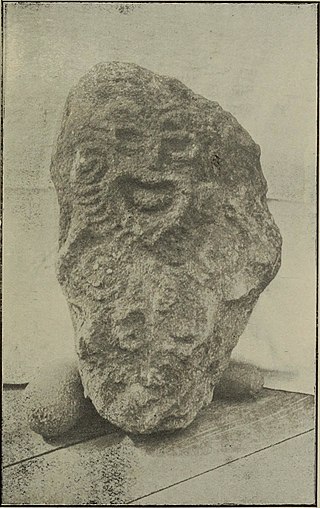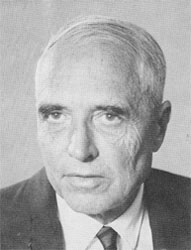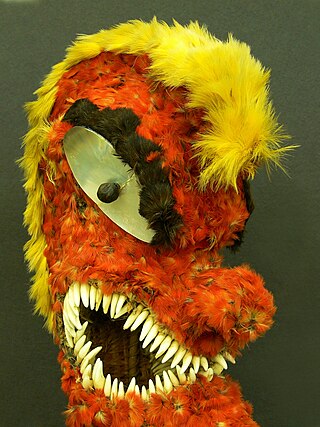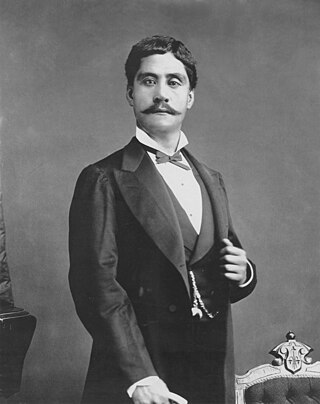Related Research Articles

Hawaii is an island state of the United States, in the Pacific Ocean about 2,000 miles (3,200 km) southwest of the U.S. mainland. It is the only state not on the North American mainland, the only state that is an archipelago, and the only state in the tropics.

Polynesian mythology encompasses the oral traditions of the people of Polynesia together with those of the scattered cultures known as the Polynesian outliers. Polynesians speak languages that descend from a language reconstructed as Proto-Polynesian – probably spoken in the Tonga and Samoa area around 1000 BC.

In Māori mythology, Rongo or Rongo-mā-Tāne is a major god (atua) of cultivated plants, especially kumara, a vital crop. Other crops cultivated by Māori in traditional times included taro, yams (uwhi), cordyline (tī), and gourds (hue). Because of their tropical origin, most of these crops were difficult to grow except in the far north of the North Island, hence the importance of Rongo in New Zealand.

Menehune are a mythological race of dwarf people in Hawaiian tradition who are said to live in the deep forests and hidden valleys of the Hawaiian Islands, hidden and far away from human settlements.

In Hawaiian mythology, Laka is the name of two different popular heroes from Polynesian mythology..
In Hawaiian mythology, ʻAikanaka is a mortal chief.
The music of Hawaii includes an array of traditional and popular styles, ranging from native Hawaiian folk music to modern rock and hip hop. Styles like slack-key guitar are well known worldwide, while Hawaiian-tinged music is a frequent part of Hollywood soundtracks. Hawaii also made a contribution to country music with the introduction of the steel guitar. In addition, the music which began to be played by Puerto Ricans in Hawaii in the early 1900s is called cachi cachi music, on the islands of Hawaii.
Hawaiian literature has its origins in Polynesian mythology. It was originally preserved and expanded solely through oral traditions, as the ancient Hawaiians never developed a writing system. Written literature in the Hawaiian language and literary works in other languages by authors resident in Hawaii did not appear until the nineteenth century, when the arrival of American missionaries introduced the English language, the Latin alphabet, and Western notions of composition to the kingdom.
The aliʻi were the traditional nobility of the Hawaiian islands. They were part of a hereditary line of rulers, the noho aliʻi.
Folklore in Hawaii in modern times is a mixture of various aspects of Hawaiian mythology and various urban legends that have been passed on regarding various places in the Hawaiian islands. The following is a partial list of some of these legends.
Lilikalā K. Kameʻeleihiwa is a Hawaiian historian, filmmaker, and senior professor at the University of Hawaiʻi's Kamakakūokalani Center for Hawaiian Studies. Her earliest work was published under the name of Lilikalā L. Dorton.
In Hawaiian mythology, the Nawao are a legendary people, a wild, large-sized hunting people, descended from Lua-nu'u. Other sources suggest that the Nawao were present in Hawaii before the Menehune who are thought to have driven them out or destroyed them. However, folklorist Katherine Luomala believes that the legends of the Menehune and similar creatures are a post-European contact mythology.

Nathaniel Bright Emerson was a medical physician and author of Hawaiian mythology. He was the son of Protestant missionaries John S. Emerson and Ursula Newell Emerson, and father of artist Arthur Webster Emerson.

Mokoliʻi, also known as Chinaman's Hat, is a basalt islet in Kāneʻohe Bay, Hawaii. Mokoliʻi is part of Kualoa Regional Park and located 1⁄3 mile (0.54 km) offshore of Kualoa Point, Oahu. The 12.5-acre (5.1 ha) islet was at one time part of a basaltic ridge on Oahu before marine erosion separated it.

Samuel Hoyt Elbert was an American linguist who made major contributions to Hawaiian and Polynesian lexicography and ethnography. Born on a farm in Des Moines, Iowa, to Hoyt Hugh Elbert and Ethelind (Swire) Elbert, Sam grew up riding horses, one of his favorite pastimes well into retirement. After graduating from Grinnell College with an A.B. in 1928, he earned a certificate in French at the University of Toulouse and traveled in Europe before returning to New York City, where he waited tables, clerked for a newspaper, reviewed books, and studied journalism at Columbia University. Wanderlust took him to French Polynesia, first to Tahiti and then to the Marquesas, where he quickly became proficient in Marquesan. In 1936, he went to work for the United States Geological Survey in Hawaiʻi. There he met researchers on Pacific languages and cultures at the Bishop Museum, chief among them Mary Kawena Pukui, from whom he learned Hawaiian and with whom he worked closely over a span of forty years. When war broke out in the Pacific, the U.S. Navy employed him as an intelligence officer studying the languages of strategically important islands. He was posted to Samoa in 1943, then to Micronesia, where he collected and published wordlists for several island languages.

In Hawaiian religion, Kū is one of the four great gods. The other three are Kanaloa, Kāne, and Lono. Some feathered god images or akua hulu manu are considered to represent Kū. Kū is worshiped under many names, including Kū-ka-ʻili-moku, the "Snatcher of Land". Rituals for Kūkaʻilimoku included human sacrifice, which was not part of the worship of other gods.

Albert Kūkaʻilimoku Kūnuiākea was the illegitimate son of King Kamehameha III and his mistress Jane Lahilahi. He served as a politician in the Kingdom of Hawaii and the Republic of Hawaii. He later was baptized into the Anglican Church of Hawaii with the name Albert Fredrick Kunuiakea Oiwiaulani Koenaokalani.
Kahiko-Lua-Mea is a god in Hawaiian mythology, who was once a chief on the Earth and lived in Olalowaia. He is mentioned in the chant Kumulipo and in the Chant of Kūaliʻi.
In Hawaiian mythology, Welaʻahilaninui was a god or the first man, the forefather of Hawaiians. He is mentioned as an ancestor of Hawaiian chiefs in the ancient Hawaiian chant Kumulipo.
In Hawaiian mythology, Hauwahine was a moʻo and the guardian spirit of Kawainui Fishpond as well as Pā'eo and Kaʻelepulu fishponds.
References
- Martha Beckwith, Hawaiian Mythology (Honolulu:University of Hawaii Press), 1970:145.
- Mary Kawena Pukui and Samuel H. Elbert, Hawaiian Dictionary (Honolulu:University of Hawaii Press), 1986.